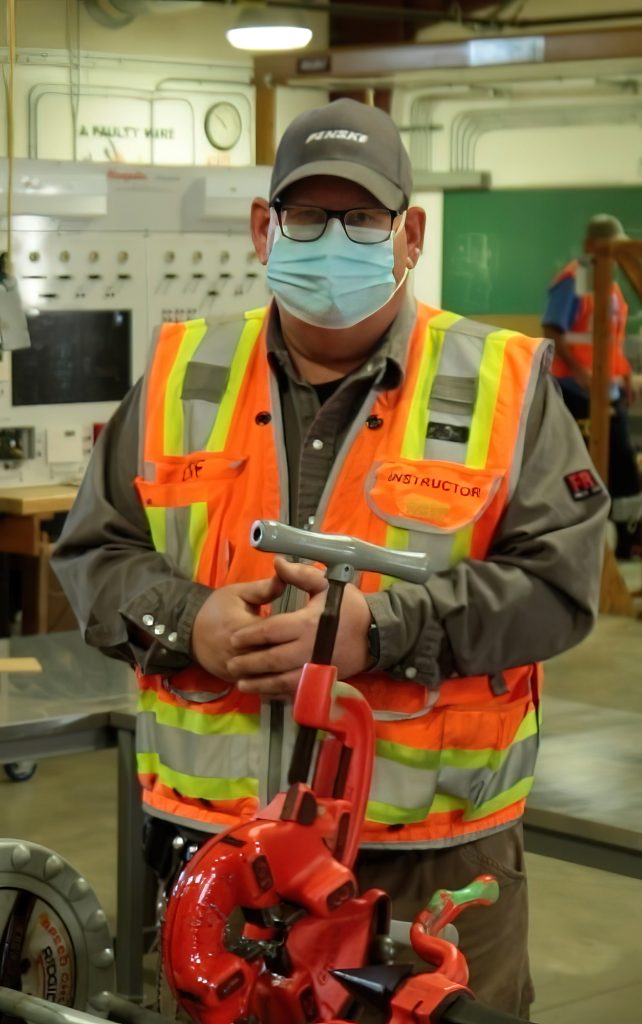Meet James Searcy, Electrical Works Instructor at Substance Abuse Treatment Facility (SATF). His course is one of many Career Technical Education (CTE) courses the Office of Correctional Education offers. These courses provide industry-recognized certification and an employment pathway to both a career and a livable wage.
As part of Back to School Month, educators throughout CDCR are sharing their thoughts on the importance of correctional education. Inside CDCR caught up with Searcy to discuss his rehabilitative role as an instructor at SATF.
Q&A with James Searcy

What is your background and how did you arrive in your current position?
A couple of years out of high school I began my career as an electrician. I worked residential, commercial, and industrial. In 1997 I was hired the department for Plant Operations at SATF as an Electrician II.
One day a colleague informed me the education department was hiring. So, I applied and got the job as an electrical instructor at the SATF Tulare Lake Adult School in 2007.
Although it took many years to become comfortable teaching in a correctional environment, it turned out to be the best job in my entire career. Seeing the students I taught become successful, I knew I found my true calling.
Why is CTE a vital part of education?
Career and Technical Education (CTE) gives students the necessary tools to be successful in the modern workplace. Not only does this include career and academic skill, it also includes important soft skills such as critical thinking, teamwork, and innovation. Today, more than ever, employers want to hire entry-level employees who can hit the ground running. This is where CTE comes in.
What is something about your program that might surprise people?
CTE classes serve as an immediate solution for incarcerated individuals to return to the community with the skills to be productive citizens. It gives students a plethora of opportunities after leaving. Without the taxpayers’ hard-earned money, none of this would be possible. It costs more than $100,000 per year to incarcerate someone in prison in California.
A 2013 study by the Rand Corporation found people who participated in educational programs were 43% less likely to return to prison within three years than those who did not participate. The study found every dollar invested in prison education programs saved nearly $5 on later incarceration costs, and through reducing recidivism, correctional education was cost-effective for states. Compared to incarceration’s direct costs, correctional education offers an estimated 400% return on investment for taxpayers over three years.
The report also stated the odds of obtaining employment post-release among those who participated in correctional education were 13% higher than the odds for those who had not participated in an education program, either academic or CTE.
See more stories highlighting CDCR/CCHCS staff.
Follow CDCR on YouTube, Facebook, X (formerly Twitter). Listen to the CDCR Unlocked podcast.
